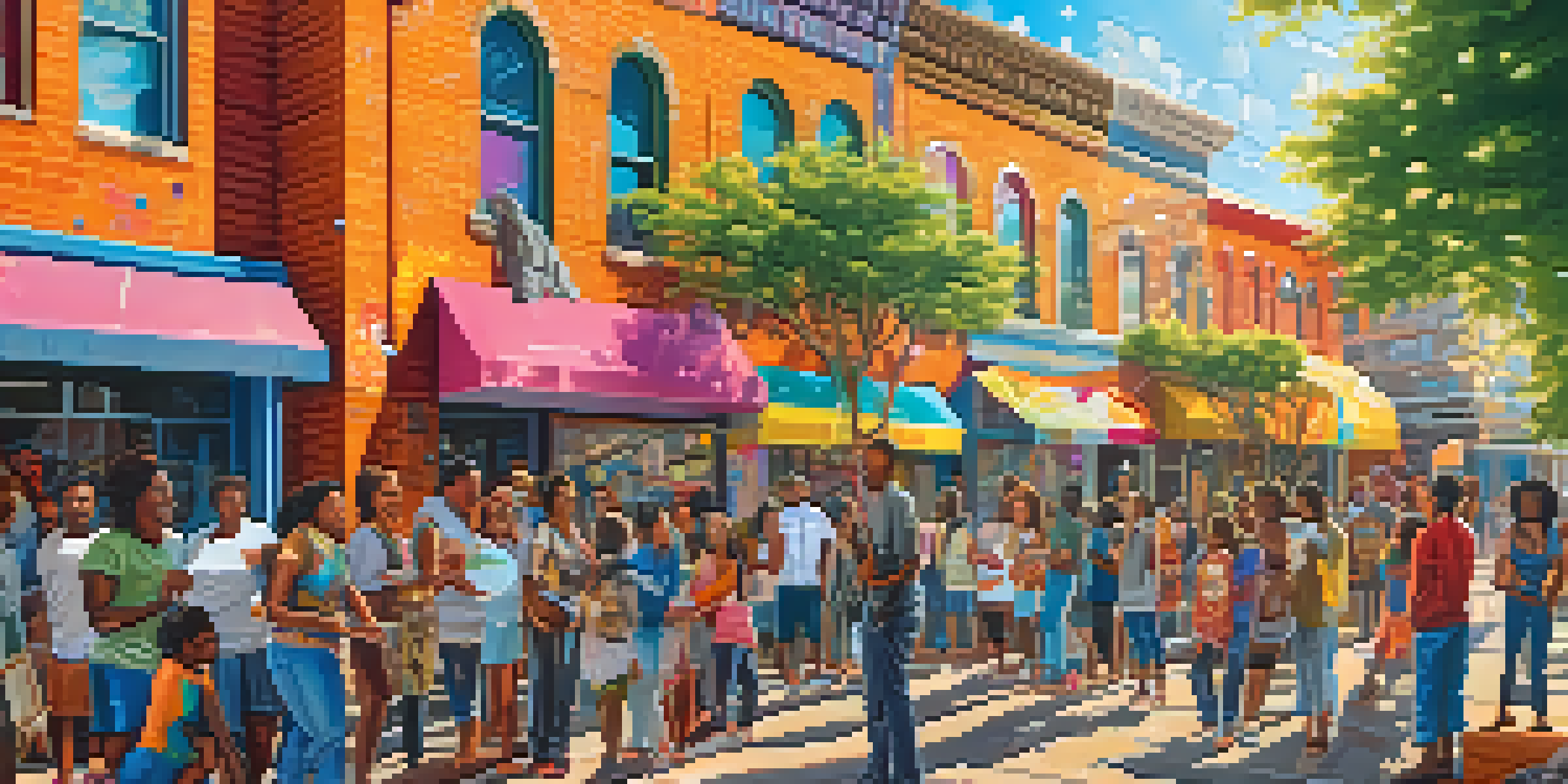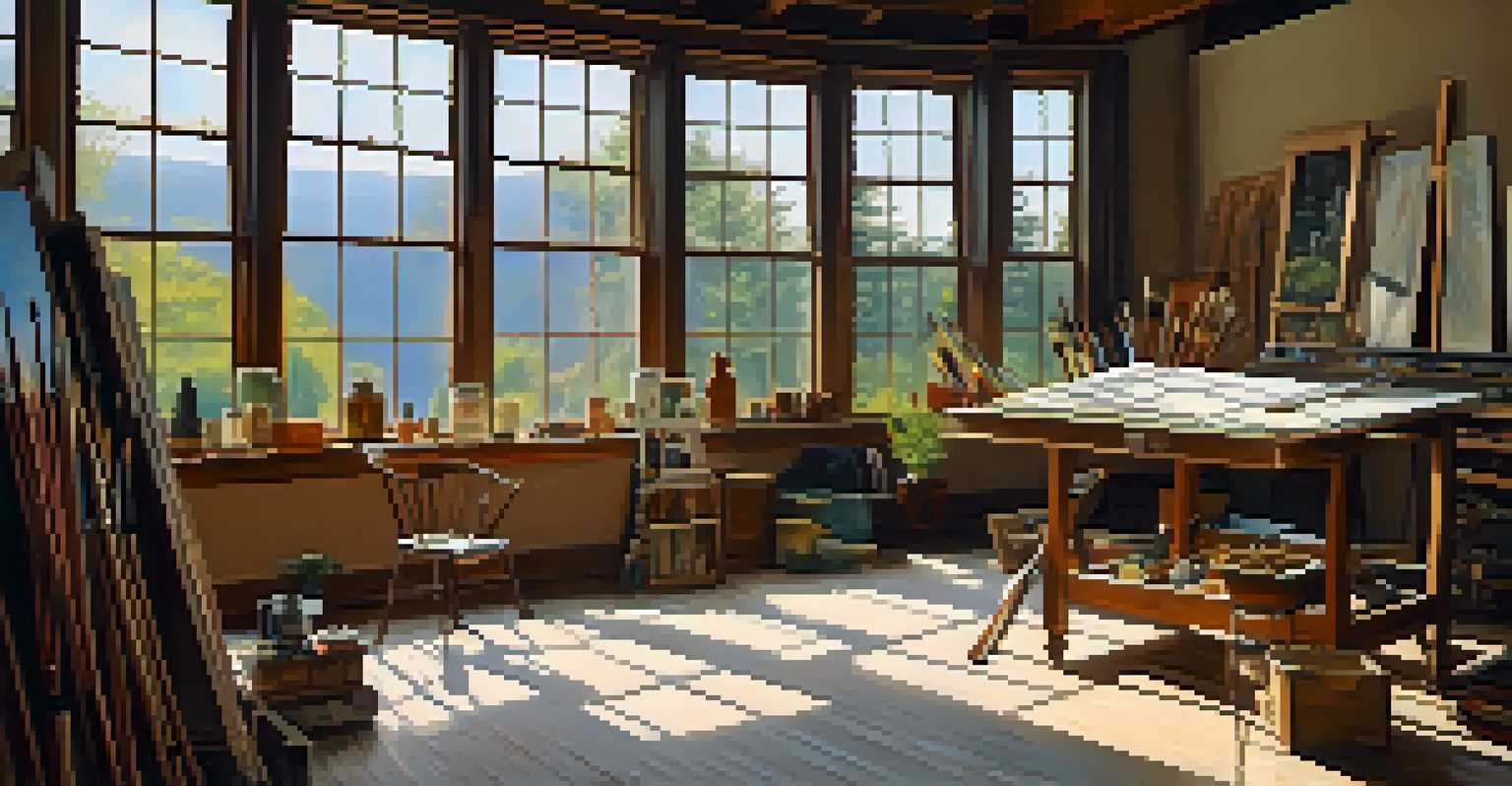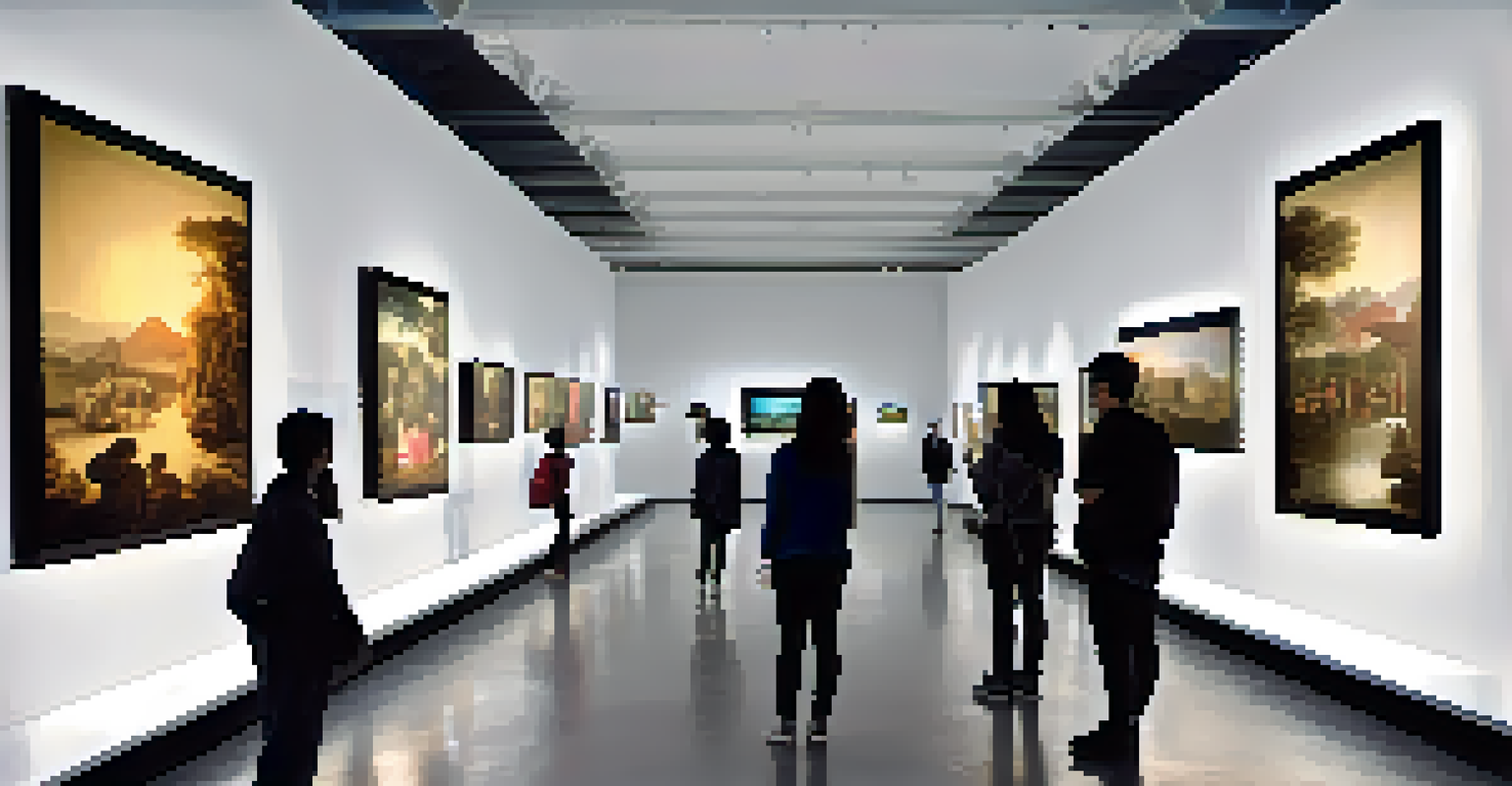Painting as a Medium for Preserving Cultural Heritage

The Role of Painting in Cultural Storytelling
Painting has long served as a powerful medium for storytelling, encapsulating the essence of cultures and histories. Through vibrant colors and intricate designs, artists convey narratives that reflect societal values, beliefs, and traditions. For example, Indigenous Australian dot paintings tell stories of the Dreamtime, illustrating connections to land and ancestry.
Art is the most beautiful of all lies.
These visual stories not only capture moments in time but also serve as educational tools for future generations. When we look at a painting, we often find ourselves drawn into the world it represents, gaining insights into customs and experiences that might otherwise fade away. This connection fosters a deeper appreciation for cultural diversity.
Moreover, paintings can bridge generational gaps, allowing younger audiences to engage with their heritage. By recognizing and valuing these artistic expressions, communities can ensure that their unique identities continue to thrive in an increasingly globalized world.
Reviving Traditional Techniques Through Contemporary Art
As modern artists embrace traditional painting techniques, they breathe new life into cultural practices that may be at risk of disappearing. Techniques like fresco, batik, and calligraphy not only showcase artistic skill but also embody the history and values of the cultures they originate from. Artists who master these methods play a crucial role in keeping them alive.

For instance, the resurgence of traditional Japanese ink painting, or sumi-e, reflects a growing interest in the philosophical and aesthetic principles behind the art form. By blending traditional methods with contemporary themes, artists engage new audiences while preserving age-old techniques.
Art as Cultural Storytelling
Painting serves as a vital medium for storytelling, reflecting the values and histories of diverse cultures.
This fusion of old and new creates a dialogue between past and present, allowing cultures to evolve while maintaining their core identities. As these practices gain recognition, they inspire a renewed appreciation for cultural heritage, encouraging others to explore and embrace their artistic roots.
Art Exhibitions as Cultural Preservation Platforms
Art exhibitions have become vital platforms for showcasing paintings that celebrate and preserve cultural heritage. These events not only highlight the work of talented artists but also foster conversations around cultural identity and the importance of safeguarding traditions. Museums and galleries often curate exhibitions that focus on specific themes, inviting visitors to explore the richness of diverse cultures.
Every artist dips his brush in his own soul, and paints his own nature into his pictures.
For example, the Smithsonian National Museum of the American Indian regularly features exhibitions that highlight Indigenous artists, showcasing their unique perspectives and stories. Such initiatives allow audiences to engage with art in a meaningful way, promoting a deeper understanding of cultural issues and histories.
Additionally, these exhibitions can spark interest in cultural preservation efforts, encouraging individuals to support artists and organizations dedicated to keeping traditions alive. By experiencing these artworks firsthand, visitors are often moved to advocate for the continuation of cultural practices in their own communities.
Community Art Projects and Cultural Identity
Community art projects serve as a powerful means of preserving cultural heritage, allowing local residents to collaboratively express their identities through painting. These initiatives often involve workshops and public murals that reflect the unique stories and histories of the community. When people come together to create art, they cultivate a sense of pride and ownership over their cultural narratives.
For instance, community mural projects in urban neighborhoods can transform public spaces while celebrating the diverse backgrounds of residents. These vibrant murals not only beautify the environment but also serve as visual reminders of the community's heritage and shared experiences.
Revival of Traditional Techniques
Modern artists are revitalizing traditional painting methods, ensuring cultural practices remain relevant and appreciated.
Through these collaborative efforts, participants learn about their cultural roots while fostering connections with one another. This process reinforces the importance of cultural heritage and instills a sense of responsibility to pass these traditions down to future generations.
The Digital Age: Innovative Ways to Preserve Art
In the digital age, technology has opened up new avenues for preserving and disseminating cultural heritage through painting. Virtual galleries, online exhibitions, and social media platforms allow artists to share their work with a global audience, transcending geographical boundaries. This accessibility enables diverse voices to be heard, enriching the cultural landscape.
Moreover, digital archiving of traditional paintings ensures that even if physical works are lost, their essence remains preserved. Organizations can use high-resolution scans and photographs to document artwork, creating virtual collections that can be accessed by anyone, anywhere.
This shift not only democratizes art but also invites younger generations to engage with their heritage in innovative ways. By utilizing technology, we can create a dynamic interplay between tradition and modernity, ensuring that cultural heritage remains vibrant and relevant.
Challenges in Preserving Cultural Heritage Through Art
Despite the importance of painting in preserving cultural heritage, several challenges persist. Rapid urbanization, globalization, and cultural assimilation often threaten traditional art forms, leading to a decline in their practice. As societies evolve, there is a risk that unique artistic expressions may be overshadowed by mainstream trends.
Additionally, funding and resources for artists dedicated to preserving cultural heritage can be limited. Many traditional artists struggle to gain recognition or financial support, which hinders their ability to continue their craft. This lack of support can result in the disappearance of valuable cultural practices.
Community Engagement Through Art
Community art projects foster collaboration, allowing individuals to express their cultural identities and preserve heritage.
Addressing these challenges requires a collective effort from governments, organizations, and communities to prioritize the preservation of cultural heritage. By investing in programs that support traditional artists and promote cultural education, we can help ensure that these artistic expressions continue to thrive for generations to come.
The Future of Painting in Cultural Heritage Preservation
Looking ahead, the future of painting as a medium for preserving cultural heritage appears promising yet complex. As global interest in diverse cultures grows, there is an opportunity for traditional art forms to gain recognition and appreciation. This renewed interest can inspire artists to innovate while staying true to their roots, creating a vibrant tapestry of cultural expression.
Moreover, collaborations between artists, cultural institutions, and communities can lead to exciting new projects that celebrate heritage in unique ways. By harnessing the power of painting, we can create dialogue around cultural identity and inspire future generations to cherish their artistic legacies.

Ultimately, the preservation of cultural heritage through painting is a shared responsibility. It requires the commitment of individuals, communities, and institutions to foster an environment where artistic expression can flourish, ensuring that the stories and traditions of our past continue to resonate in the future.